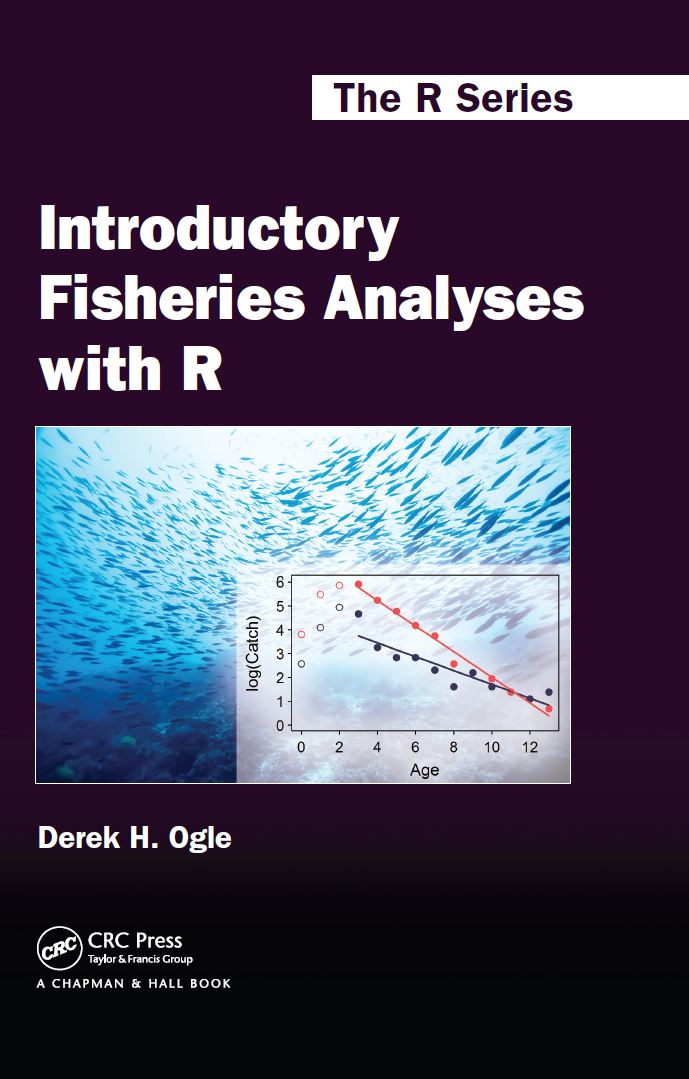Contents
Book Details
Brief Description

Table of Contents
- (Very Brief) Introduction to R Basics
- The bare fundamentals of R that are required for the remainder of the book.
- Loading Data and Basic Manipulations
- Load data into R from external files and perform typical manipulations including filtering, sorting, aggregating, joining, and converting between wide- and long-formats.
- Plotting Fundamentals
- The bare fundamentals for constructing basic plots using base R.
- Age Comparisons
- Compare two or more estimates of age for the same fish with precision and bias metrics and plots.
- Age-Length Keys
- Assign ages to unaged fish from their length and an age-length-key.
- Size Structure
- Assess size structure through length frequencies and the proportional size distribution (PSD) metric.
- Weight-Length Relationships
- Introduction to simple linear regression through examination of weight-length relationships.
- Condition
- Compute condition metrics from observed length and weights. Introduction to one-way ANOVA.
- Abundance from Capture-Recapture Data
- Estimate abundance from capture-recapture data for closed (single and multiple recapture events) and open populations.
- Abundance from Depletion Data
- Estimate abundance from removal or depletion samplings (Leslie, DeLury, k-pass).
- Mortality Rates
- Estimate total mortality rates from catch curve and capture-recapture data. Estimate fishing and natural mortality with empirical models.
- Individual Growth
- Estimate parameters for the von Bertalanffy growth function and compare growth parameters among populations.
- Recruitment
- Estimate parameters for the Beverton-Holt and Ricker stock-recruitment models, compute spawning potential ratios, and estimate year-class strengths from catch data.
Preview
A preview of the Table of Contents and Chapter 1 is available from Google Books. This service allows you to search within the book, though it does not provide a full preview of the pages returned by the search.
Errata
An errata and post-production notes are maintained here.
Dedication
The book is dedicated to my three professional mentors. Please goto this page to see my dedication to them.

